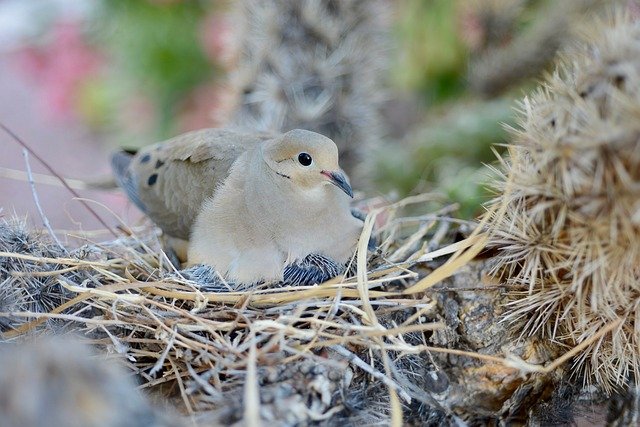Doves Lay Eggs.

Hello my friends..
Pigeons, or Columba livia domestica, are a type of bird that is often found in various parts of the world, including Indonesia. They are known as birds that are monogamous and often nest in high places, such as roofs or gaps in buildings. The laying process of pigeons is also interesting to observe.
In general, the pigeon reproduction process begins with building a nest. They usually use materials available around them, such as twigs, plant fibers, or synthetic materials such as paper or plastic. This nest is made neatly enough to protect the eggs and young birds from bad weather and predators.
Female doves usually lay eggs after mating with a male. The number of eggs produced each time it is laid can vary between one and two, depending on the species and environmental conditions. These eggs have a strong but thin shell, which allows the development of the embryo inside.
The hatching process for pigeon eggs usually takes about two weeks, depending on the environmental temperature. During the hatching period, both parent birds usually take turns incubating the eggs. This period is important to ensure the egg temperature remains stable so that the embryo can develop properly.
When the eggs hatch, the newborn dove chicks (chick doves or squabs) emerge from their shells. They are born naked and blind, completely dependent on the care and food provided by their parents. Pigeon chicks will stay in the nest for the first few weeks of their lives, relying on both parents to feed them and protect them from danger.
Overall, the process of laying eggs and raising young pigeons is a fascinating example of natural instinct in the world of birds. Although doves are often considered pests by some due to their widespread distribution in urban areas, observing them in terms of reproduction can give us valuable insight into the wildlife around us.
Thank you very much.
Upvoted. Thank You for sending some of your rewards to @null. It will make Steem stronger.